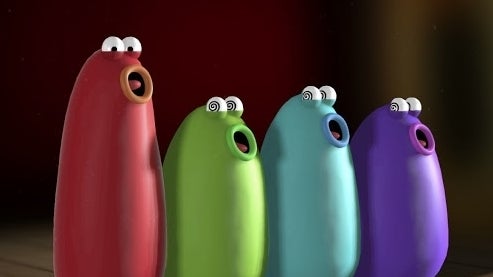A while back now, Google Arts and Culture released Blob Opera, a virtual choir designed by Google’s artist in residence, David Li. This virtual choir isn’t just something you listen to, it’s a toy with the tactile charm of a Google doodle. On screen, you have four blobs that with their round eyes and big mouths remind me of Rayman’s best friend Globox. Each of them represents a voice in a choir – bass, tenor, mezzo-soprano and soprano. While I felt the slight of this choir not including a contralto voice, I was soothed by how fun it was to play with. Making music is easy – drag a blob upwards and it stretches like taffy, changing pitch. Drag it forward and it sings a different vowel sound. You can only control one blob at a time, the rest will automatically follow suit. It’s a deceptively simple setup, but it allows you to make music with little more than your finger or your mouse. You can even record it and share it with others.
The story behind Blob Opera makes everything about it even better, because it’s a genuine feat of technology, rather than a cute toy. Blob Opera is showcase of machine learning – four performers taught a computer music by singing to it, and what you hear when you use the opera yourself is a machine’s interpretation of music, and more importantly, how several people are supposed to sound together, rather than just pre-recorded samples by artists that you can play around with.
I find this way to make music fascinating because I instinctively want to dislike it. Whenever we talk about the limits of machine learning, we like to use the arts as a prime example of all the things humans will always beat computers at. We assume no computer will ever write a poem like a human, or make music like one, because only humans have that special sauce called emotion, the real ingredient of any worthwhile piece of art. Humans, we like to think, have the element of surprise on their side, because we recognise how something is supposed to work and have the ability to deliberately defy expectations.
